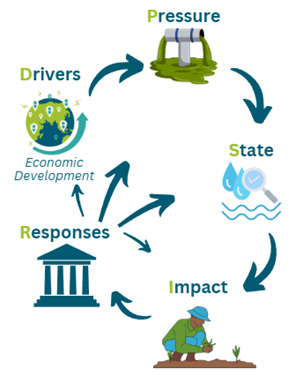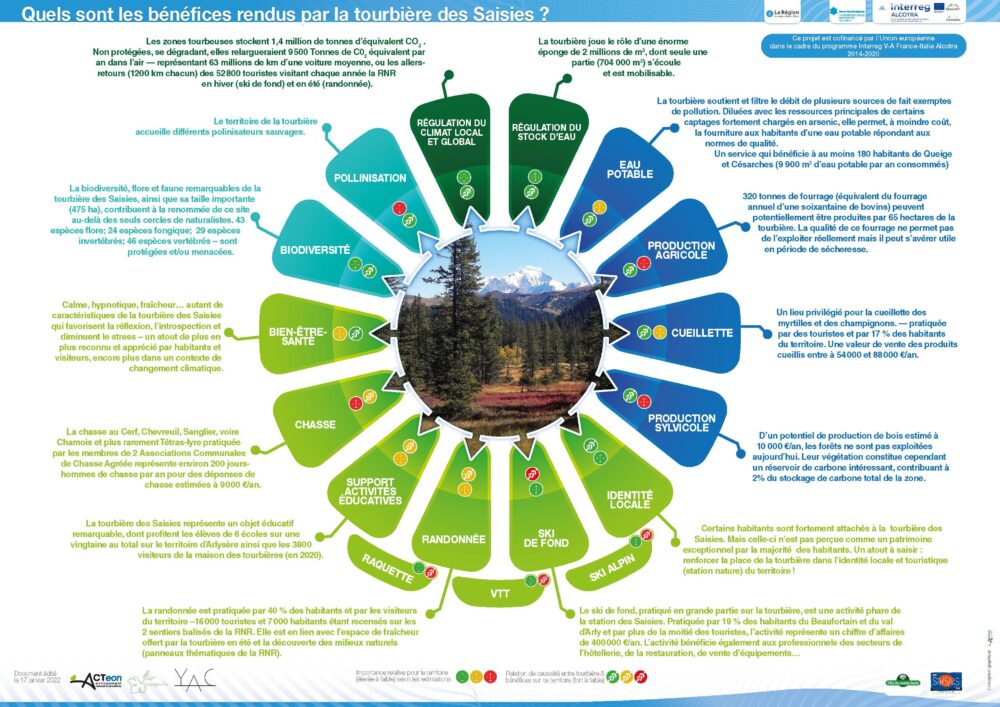To improve water resource management, let’s talk about economics.
 |
I am an earth-sciences engineer specialising in integrated water resource management. Economics classes never really interested me. My passion lies in the water cycle, the dynamics of aquifers and rivers, the chemical molecules polluting our shared resource, the distribution of this blue gold across administrative borders, and the breeding grounds of trout, toads, and dragonflies. Then, in 2016, I joined ACTeon[1]! Now it’s my turn to explain why economics is so important when it comes to sustainably managing and protecting water resources—and why every team should always have an economist on board. |
Reason #1: Going Beyond Environmental Considerations
We’d all love to have the best arguments, the most striking photos, and the support of an influencer to spark interest in rivers, aquifers, and wetlands. But there’s something even more powerful: economic analysis[2][3]! With it, you’ll capture the attention of your audience—even those who are least engaged with environmental issues. In our toolkit: assessing the cost of inaction or of the degradation of the water cycle, monetising ecosystem services [4] (how do wetlands benefit our societies?), cost-benefit analysis[5] (is investing in risk prevention a better long-term strategy for public action?), cost-effectiveness analysis (to decide between nature-based solutions and civil engineering).
Figure 1. The ecosystem services of a peatland [6] (ACTeon 2022)
Reason #2: Collecting, Verifying, Processing, and Interpreting Economic Data
An economist’s key contribution is helping you identify, produce, or interpret the most relevant socio-economic indicators for your water management policy[7].
What does “standard gross production” (SGP) really mean, and is it useful for your study? How can purchasing power data be leveraged to find solutions for water pricing? Which graphical representations and indicators should be used to compare different economic sectors?
There are also two major challenges when handling economic data: space and time.
- Space, because economic data is not available at the scale of river basins but instead at the level of municipalities or departments. You will need to establish calculation assumptions to aggregate municipal data (bearing in mind that some municipalities are only partially within your basin) or to disaggregate departmental data. If you’re not comfortable using R, the reference software for such tasks, this will be a tough challenge.
- Time, because to compare indicators or calculate ratios, you must use a base year or period as a reference point. Monetary values from 2010 are vastly different from those in 2025 due to changes in purchasing power and inflation. This means you need to compute real values using a discount rate across all your indicators.
Reason #3: Who Pays for Water?
Every project comes with a cost. Without a solid financial strategy and transparency about the final beneficiaries, even the best ideas risk going down the drain. How much does flood prevention really cost? → Investment and operational cost estimation. Who should pay for the maintenance of major hydraulic structures: the public sector or the beneficiaries[8]? → Cost recovery analysis. How can we set a fair water price while encouraging water savings? → Water taxation.
Of course, financial challenges go beyond immediate expenses. How can we reward practices that benefit water quality without distorting competition? → Payments for ecosystem services[9]. Would a land acquisition strategy be more cost-effective in the long term than building a new drinking water treatment plant? → Multi-criteria analysis. In what cases can states be granted exemptions from good water status objectives? → Concept of disproportionate costs[10].
Water economics is constantly evolving, with new financing mechanisms, shifting regulations, and emerging opportunities appearing regularly. Our economists’ expertise will help you navigate these new concepts and make informed decisions.
Economics is Everywhere in Water Management: Proof Through the DPSIR framework |
|
 |
Have you heard of DPSIR[11] ? No? It’s a framework for illustrating cause-and-effect relationships between human activities and natural resources. The acronym stands for Driver, Pressure, State, Impact, and Response. Defining the D and P components involves listing the human activities that are—or will be—present in a river basin and that exert pressures on water resources. This requires analysing the economy of a region (including the weight of different sectors and their trends) and its society (demographics, tourism, age distribution, income levels), both now and in the future. These factors are essential for understanding how water is used, the legacy of past hydraulic infrastructure, and exposure to water-related risks. The I and R dimensions also rely on economic indicators, as they illustrate the consequences of water body degradation on the economy and society, our dependence on water, and the opportunities for action (including the cost of measures, financing options, and economic instruments to be used). This approach is the best way to highlight the importance of water for a region’s socio-economic development, helping to convince decision-makers that water management deserves their attention! |
Integrating economic sciences brings real added value to the discussions and decisions we support in water resource management. In short, to advance our thinking on the status and future of water bodies, flood risks, and aquatic environments, don’t overlook the economic dimensions!
If you’re wondering how to incorporate economics into your projects or if you’re curious to learn more about our work and expertise, get in touch! Our economists will be delighted to answer your questions: Rianne Van Duinen, Gloria De Paoli, Youssef Zaiter, Jia Wang.
Maïté Fournier, Senior Consultant – Water Policy Support, ACTeon
[1] Practical Guide for Implementing Socio-Economic Analyses to Support the Development of SAGE and River Contracts, ACTeon, 2013
[2] Shedding Light on the Social and Economic Dimensions of Water Policy in the Loire-Brittany Basin – Putting It into Practice: Conducting Economic Analyses of Water Management at the Territorial Level, AELB, 2018.
[3] Ecological Engineering Applied to Aquatic Environments: For Whom? For What Benefits?, IRSTEA & ASTEE, 2018.Working Paper –
[4] French Wetlands and Freshwater Ecosystems – Key Messages for Decision-Makers, CGDD, 2019.
BIODIV’2050: Socioeconomic Assessment of Nature-Based Solutions, CDC Biodiversité, 2019.
[5] Cost-Benefit Analysis (CBA): A Decision-Making Tool for Flood Management – Guide for Project Owners and Their Partners, CEPRI, 2011
[6] https://www.reserve-regionale-tourbiere-des-saisies.com/wp-content/uploads/2022/07/saisies_synthese_francais_vf.pdf
[7] Illuminating the social and economic dimensions of water policy in the Loire-Bretagne basin – Methods and tools for social and economic analysis: concepts, implementation and examples of applications, AELB, 2018
[8] Study on Cost Recovery for Water-Related Services in Metropolitan Basins, IREEDD and ACTeon, 2024.
[9] Payments for Environmental Services in Agriculture: Why Consider Them and How to Implement Them?, CEP, 2020.
[10] https://economie.eaufrance.fr/
[11] EEA Technical Report n°25, https://www.eea.europa.eu/en/analysis/publications/tec25




